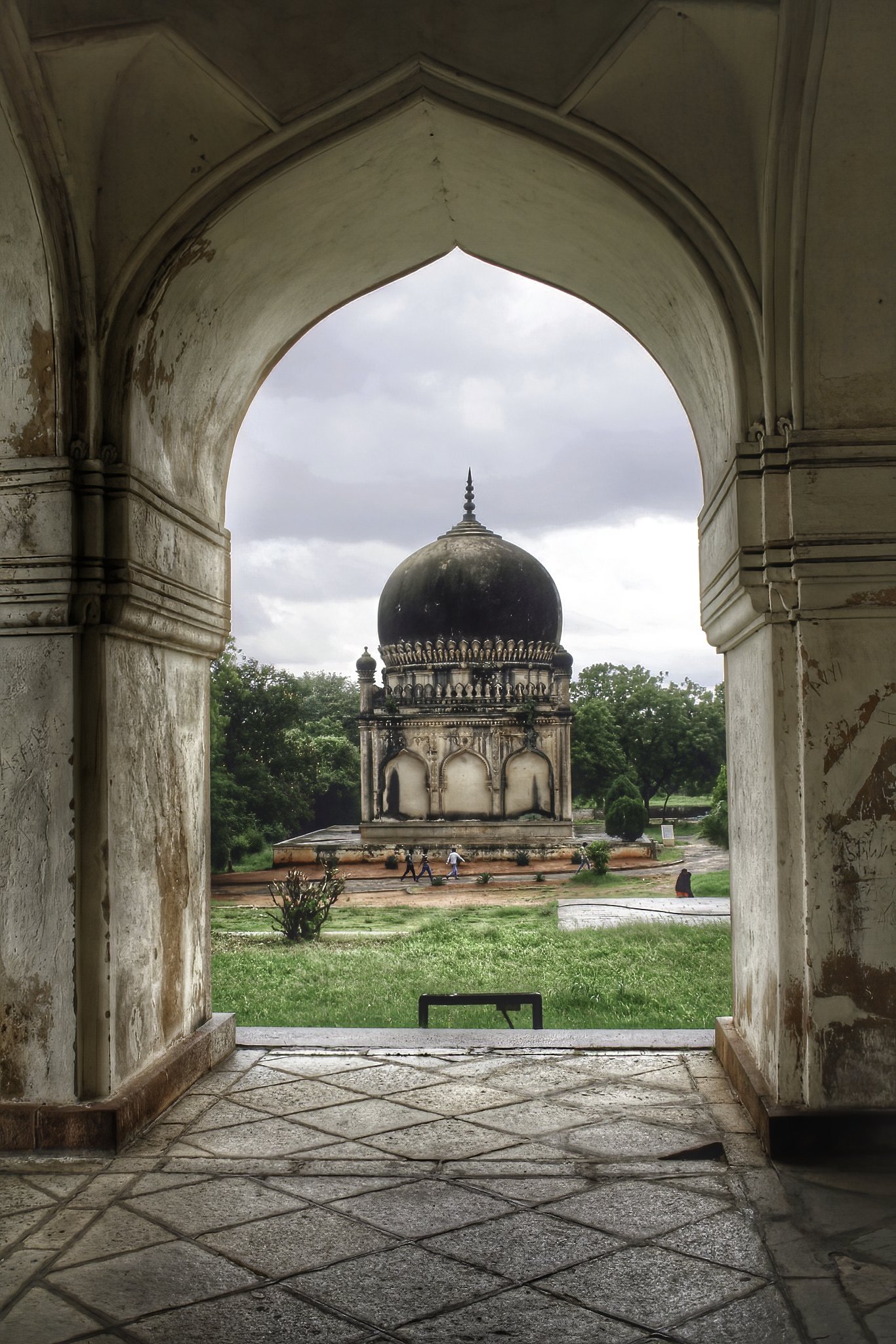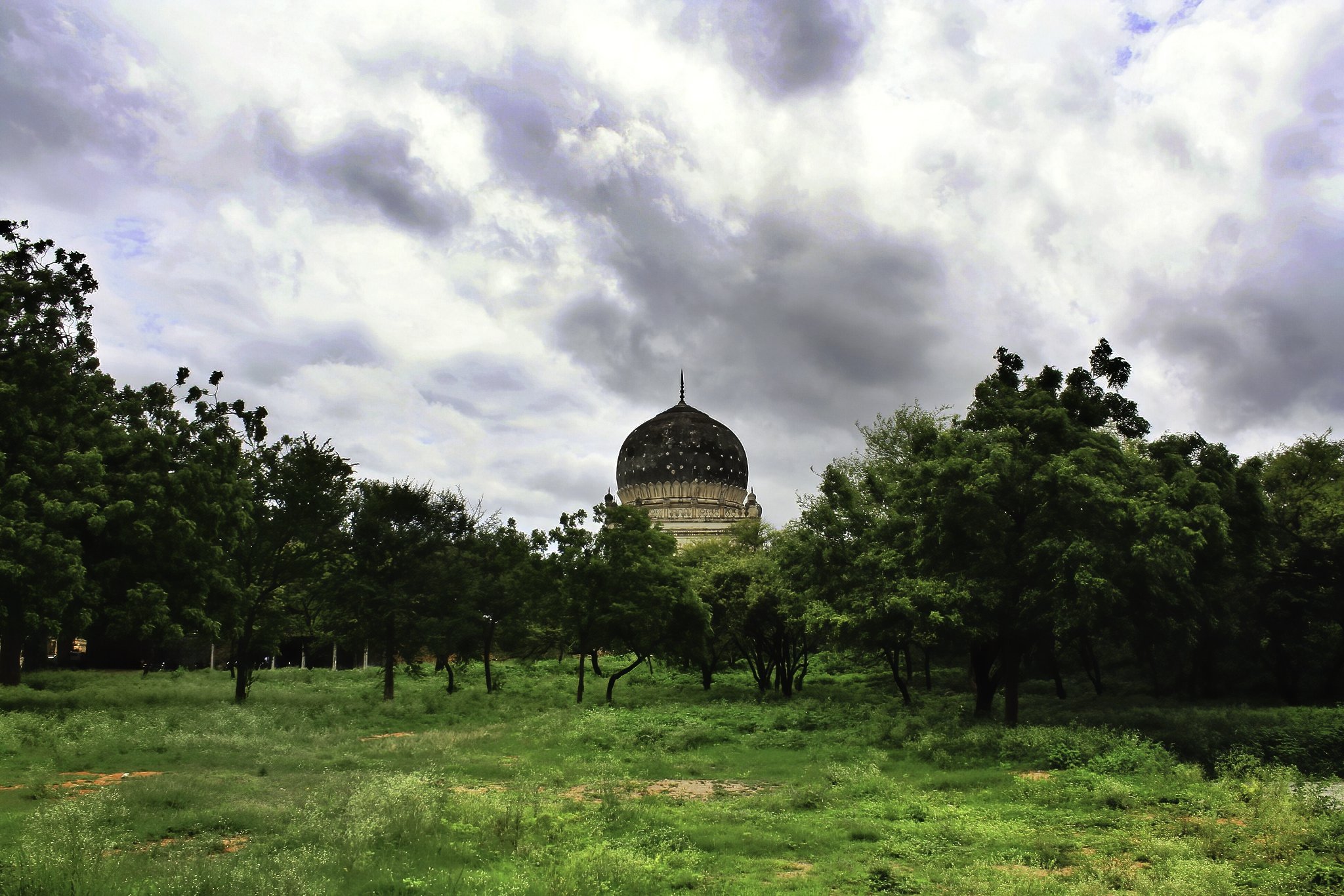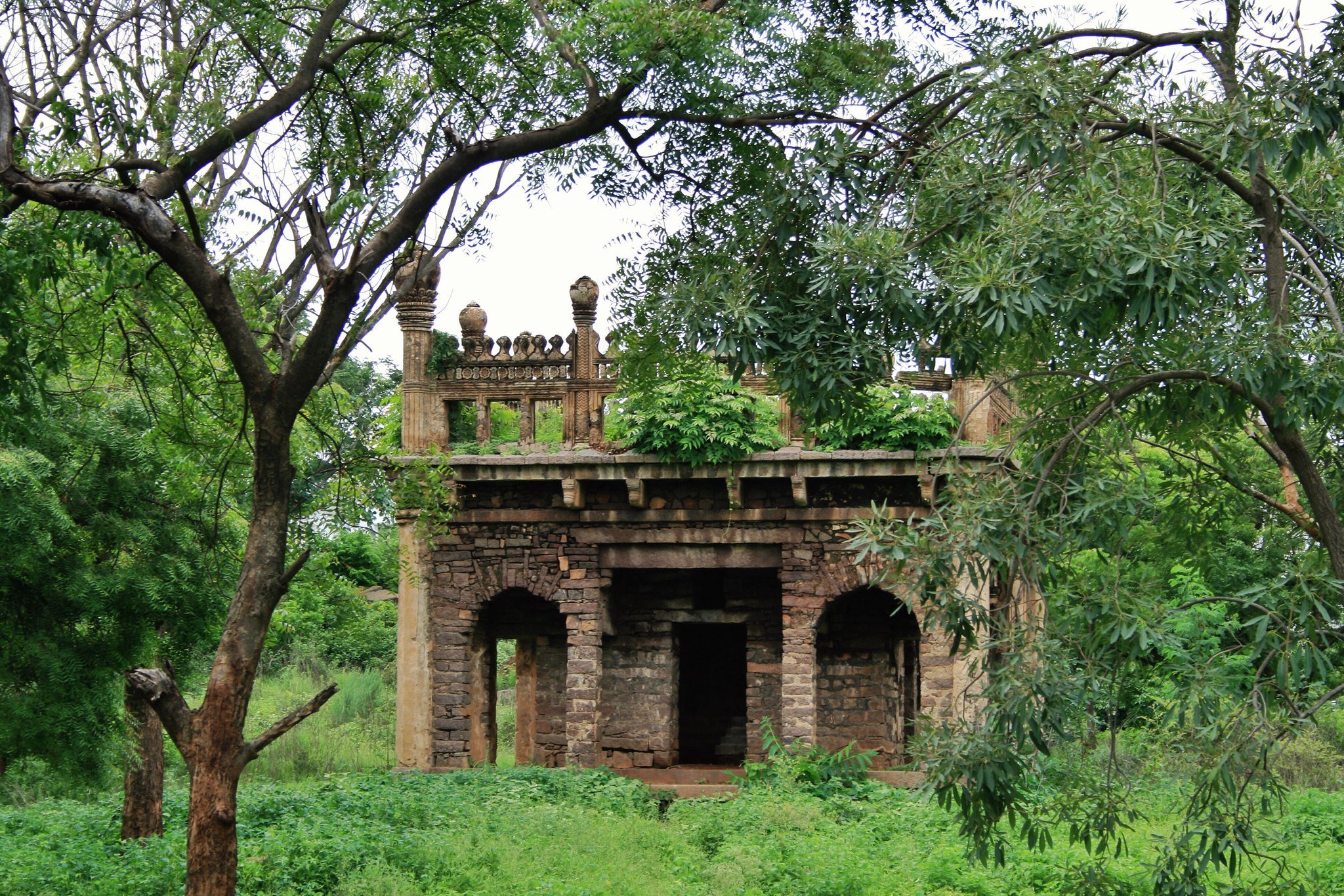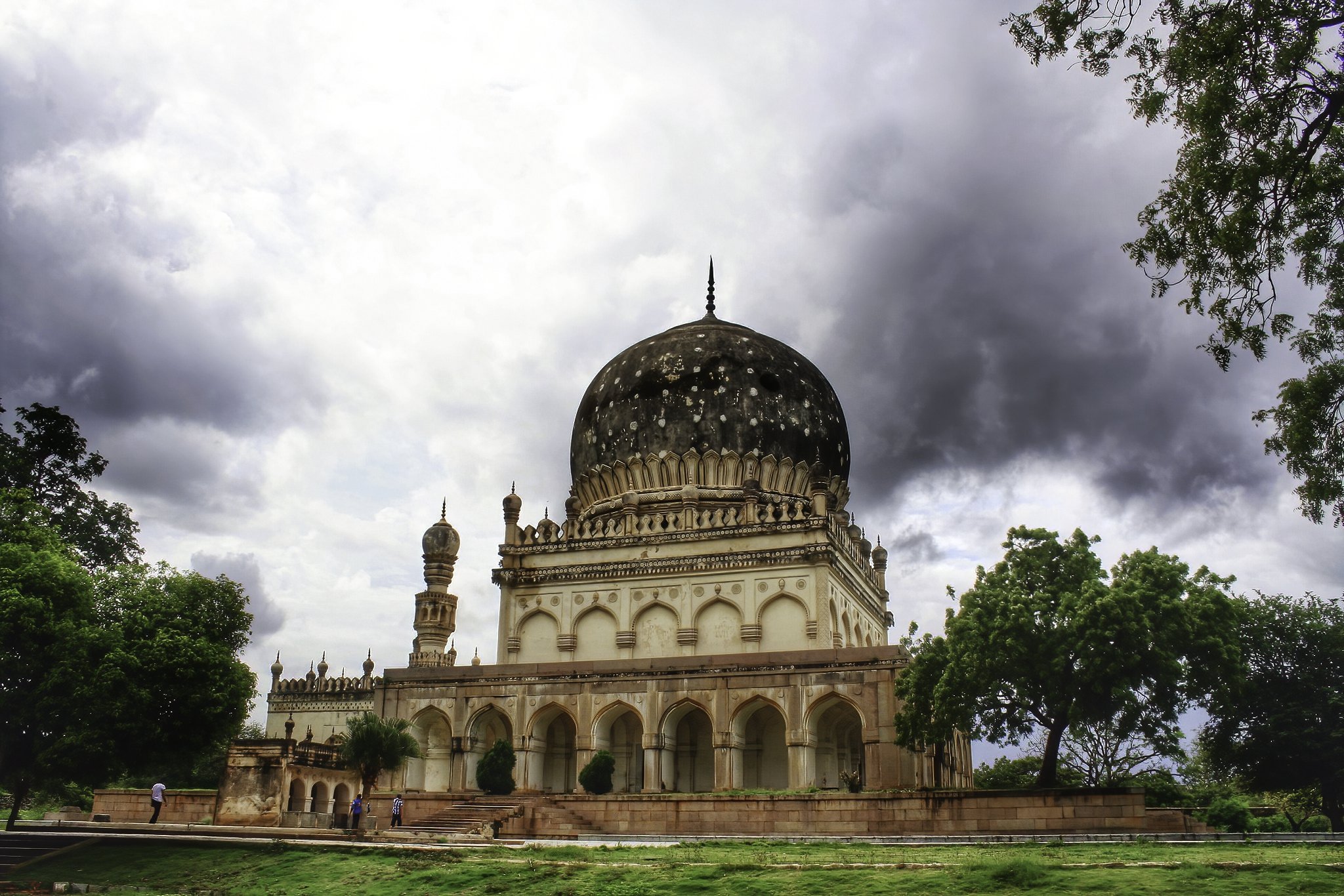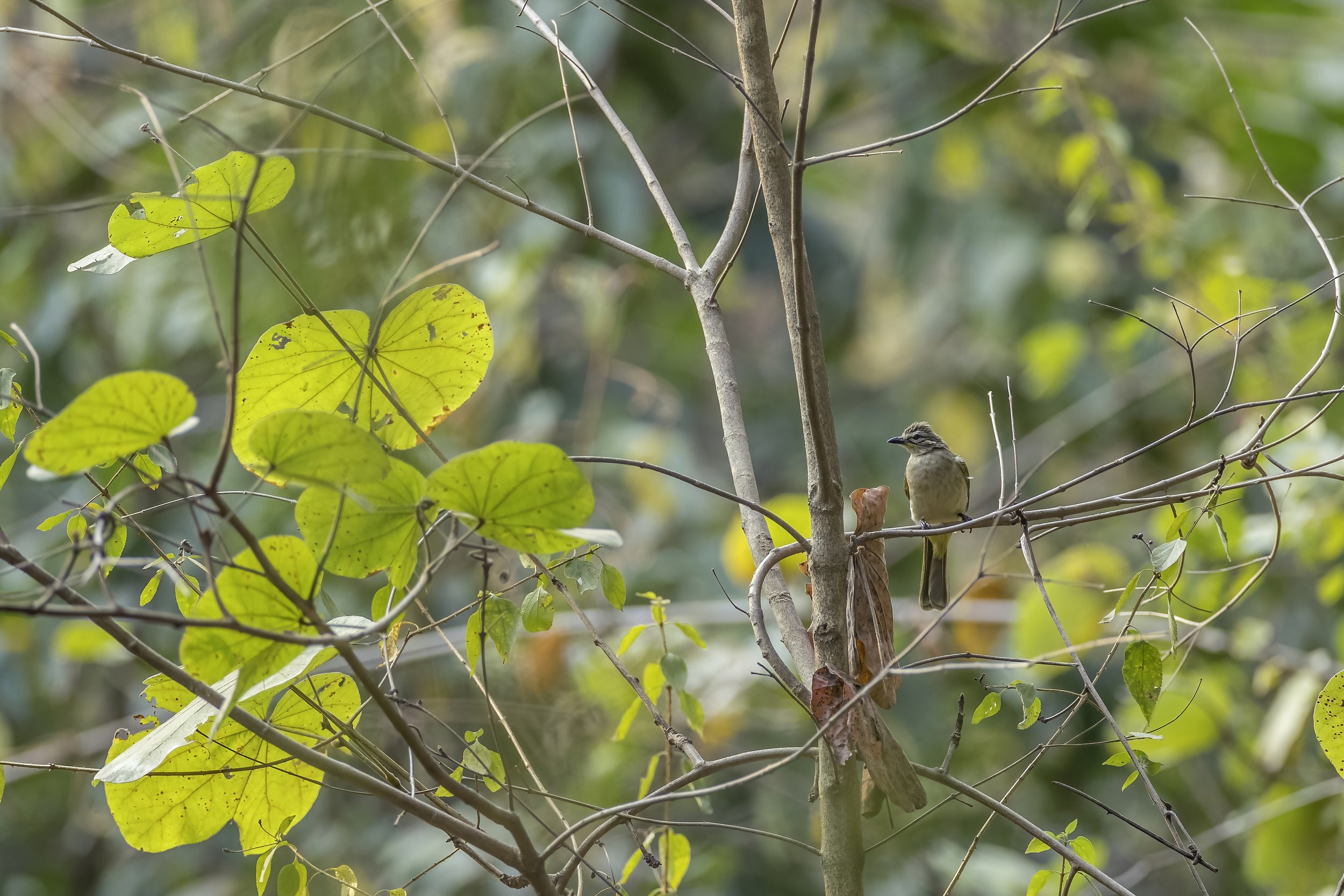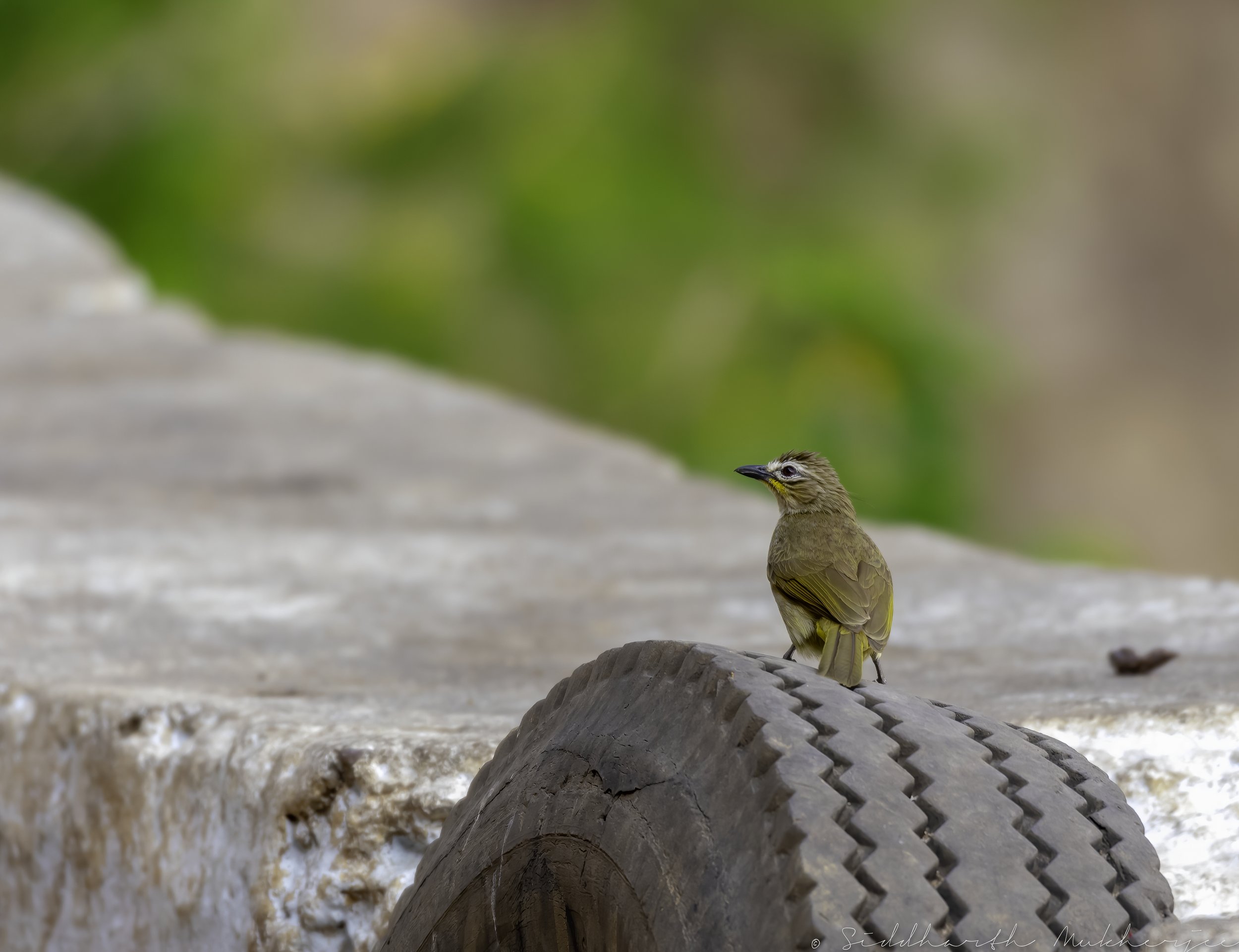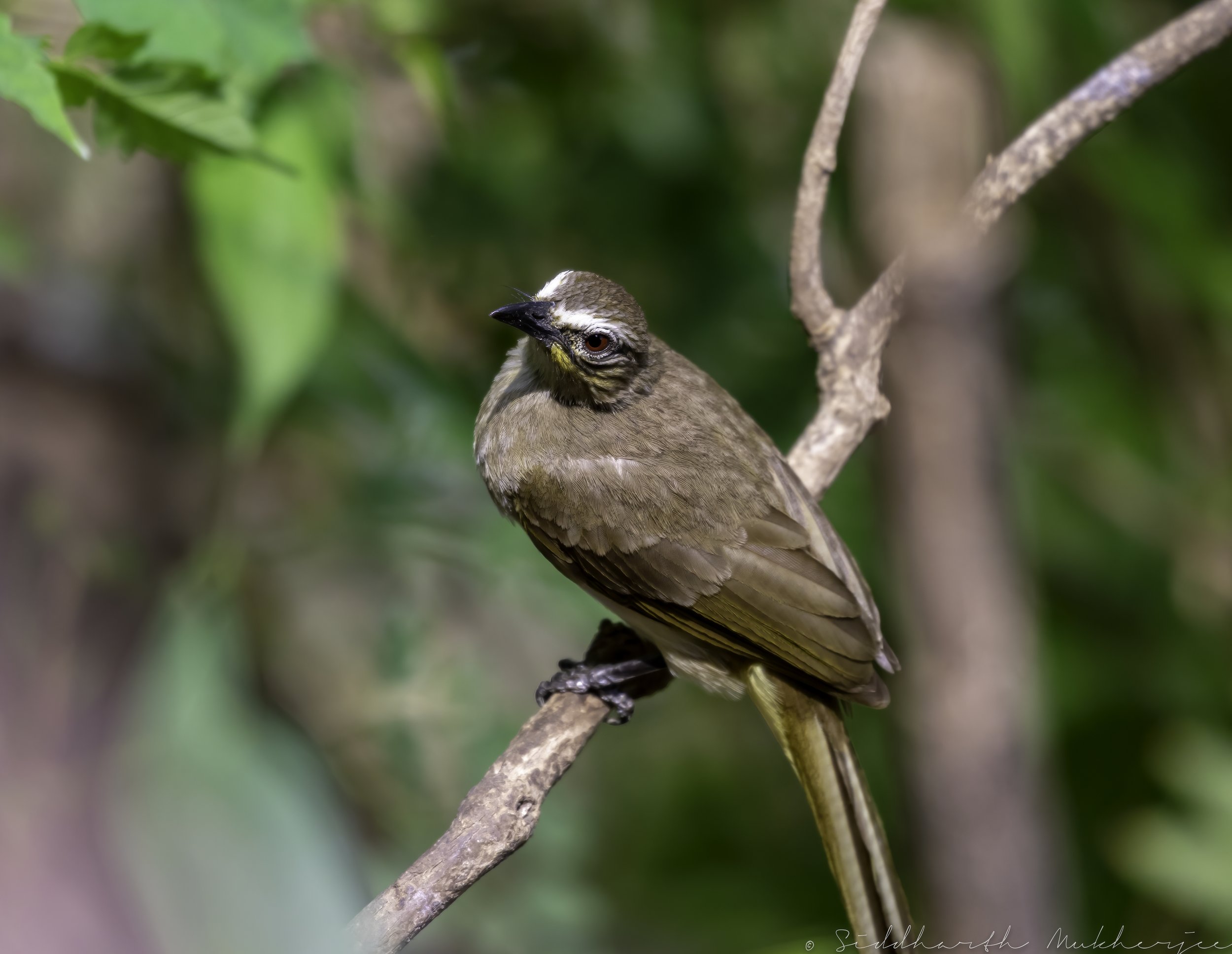White-browed Bulbul
Pycnonotus luteolus
Uma Maheshwaram Temple Complex, Telangana & Ananthagiri Forest Range
In this seventh part on the series on bulbuls, we continue our sojourn in the beautiful state of Telangana in India and the forests surrounding Hyderabad - the state capital - on the trail of the White-browed Bulbul.
Telangana is a state in southern India with Hyderabad as its capital. Hyderabad is home to the Charminar, a 16th-century mosque with 4 arches supporting 4 towering minarets. The monument overlooks the city's long-running Laad Bazaar. Laad Bazaar or Choodi Bazaar is a very old market popular for bangles located on one of the four main roads that branch out from the historic Charminar. Laad meaning lacquer is used to make bangles, on which artificial diamonds are studded. In this 1-kilometre (0.62 mi)-long shopping strip, most of the shops sell bangles, sarees, wedding related items, and imitation jewellery. View some photos of the Charminar here.
Once the seat of the Qutb Shahi dynasty, the sprawling Golconda Fort was a former diamond-trading center. Also known as Golla konda (which in the local language - Telugu - means "shepherds' hill"), is a fortified citadel built by the Kakatiyas and an early capital city of the Qutb Shahi dynasty (c. 1512–1687). Because of the vicinity of diamond mines, especially the Kollur Mine, the fortress flourished as a trade centre of large diamonds, known as the Golconda Diamonds. The region has produced some of the world's most famous diamonds, including the colourless Koh-i-Noor (now in the United Kingdom), the blue Hope (United States), the pink Daria-i-Noor (Iran), the white Regent (France), the Dresden Green (Germany), and the colourless Orlov (Russia), Nizam and Jacob (India), as well as the now lost diamonds Florentine Yellow, Akbar Shah and Great Mogul.
The Golconda complex was put by UNESCO on its "tentative list" to become a World Heritage Site in 2014, with others in the region, under the name Monuments and Forts of the Deccan Sultanate (despite there being a number of different sultanates).
The following are some photos I had taken in 2014 and 2015 with my trusty Canon 400D & my old kit lens.
The Charminar - the western facade
The massive fortifications of the Golconda Fort
Tombs of the Qutb Shahi Kings - 1580-1687 AD
Qutb Shahi Tombs - tucked away in the Ibrahim Bagh precinct
The tomb of Hayath Bakshi Begum, the royal consort of Sultan Muhammad Qutb Shah, the sixth ruler of the Golconda Sultanate in south India. When her son Abdullah Qutb Shah was made sultan at the age of fourteen in 1626, she acted as regent for the first few years of his reign, and continued to wield considerable influence in the state until her death.
Her tomb is the only woman's tomb which is equal in size to the tombs of the kings.
‡‡‡‡‡
Being located in the Deccan Plateau in the central stretch, Telangana has sub-tropical climate and the terrain consists mostly of hills, mountain ranges, and thick dense forests covering an area of 27,292 km². The annual rainfall ranges between 1,100 mm to 1,200 mm and the annual temperature varies from 15 C to 45 C. The State is drained by a number of rivers which include Godavari and Krishna.
Telangana is endowed with rich diversity of flora and fauna. It has dense teak forests on the northern part along the banks of river Godavari. As per the Champion & Seth Classification of Forest Types (1968), the forests in Telangana belong to three Forest Type Groups, which are further divided into 12 Forest Types. The State Government has taken up a massive greening programme, 'Telangana Ku Harita Haram' in the State to plant and protect 230 crore seedlings over a period of 4 years. This initiative aims at achieving the twin objectives of increasing the forest cover and reduce pressure on the existing forest resources, through massive community participation by Vana Samrakshna Samithis (VSS) and Eco-Development Committees (EDCs) in Protected Areas and Watershed Development Committees in the Watershed areas. Recorded Forest Area (RFA) in the State is 26,904 km² of which 20,353 km² is Reserved Forest, 5,939 km² is Protected Forest and 612 km² is Unclassed Forests. In Telangana, during the period 1st January 2015 to 5th February 2019, a total of 9,420 hectares of forest land was diverted for non-forestry purposes under the Forest Conservation Act, 1980 (MoEF & CC, 2019). As per the information received from the State during that last two years, 12,730 ha of plantations including avenue plantations in the State.
Three National Parks and nine Wildlife Sanctuaries constitute the Protected Area network of the State covering 5.08% of its geographical area.
India is home to around 18 species of bulbul,
Hypsipetes leucocephalus - Black Bulbul
Pycnonotus leucogenys - Himalayan Bulbul
Pycnonotus cafer - Red-vented Bulbul
Hemixos flavala - Ashy Bulbul
Brachypodius melanocephalos - Black-headed Bulbul
Brachypodius fuscoflavescens - Andaman Bulbul
Ixos nicobariensis - Nicobar Bulbul
Spizixos canifrons - Finch-billed Bulbul
Rubigula flaviventris - Black-crested Bulbul
Pycnonotus leucotis - White-eared Bulbul
Acritillas indica - Yellow-browed Bulbul
Pycnonotus luteolus - White-browed Bulbul
Brachypodius priocephalus - Grey-headed Bulbul
Rubigula gularis - Flame-throated Bulbul
Hypsipetes ganeesa - Square-tailed Bulbul
Alophoixus flaveolus - White-throated Bulbul
With that said lets move on to the some I have already written about:
And now onto the White-browed Bulbul. These birds were photographed in and around the temple complex of Uma Maheshwaram. This is a temple dedicated to the Hindu god Shiva located in the Nallamala Forest around 100 km from Hyderabad on the Hyderabad - Srisailam highway, about 4 kms from the village of Rangapur, Achampet.
Uma Maheshwaram is the northern gateway of Srisailam — one of the jyotirlingas, on a hill surrounded by high trees. Nearby hills shield the Uma Maheshwaram temple and the 500-metre stretch to PapaNasanam from sunlight for most of the day, maintaining a temperature lower than the surroundings through out the year. The area abounds in flora and fauna like this beautiful and vulnerable Yellow-throated Bulbul.
‡‡‡‡‡
For a print of the beautiful birds from my various sojourns click on the button below to read my process and order a limited edition canvas.
‡‡‡‡‡
White-browed Bulbul
The white-browed bulbul (Pycnonotus luteolus) is a member of the bulbul family of passerine birds. It is a resident breeder in Sri Lanka and peninsular India. Largely olive coloured above with whitish underparts, it has a pale supercilium and a yellow vent. They are found in dense scrub habitats, where they skulk within vegetation and can be difficult to see although their loud and distinct burst of calls is distinctive.
Two subspecies are recognized:
The white-browed bulbul is about 20 cm (7.9 in) long, with a moderately long (8 centimetres or 3 inches) tail. It has olive-grey upperparts and whitish underparts. This species is identifiable by the white supercilium, white crescent below the eye, and dark eyestripe and moustachial stripe. The vent is yellowish and there is some yellow on the chin and moustache. The throat is however largely whitish unlike in the similar looking and sounding yellow-throated bulbul which is found in rockier habitats. Three or four hair-like filo plumes are present on the nape. Sexes are similar in plumage. It is usually detected by the burst of song that it produces from the top of a bush and often dives into the bush becoming difficult to see. The song is a rich, spluttering warble and the bird is more often heard than seen. P. l. insulae is slightly darker and has a shorter wing than the nominate race.
This species is endemic to southern India and Sri Lanka. The northern boundary is along Gujarat, Madhya Pradesh and western West Bengal (near Midnapur). It is found in dry open scrub country mainly on the plains and also occurs in gardens and woodlands with dense shrubbery.
White-browed bulbuls are usually seen singly or in pairs. They forage within bushes for fruit, nectar and insects. The breeding season is spread out from March to September and may possibly breed twice a year. Peaks in breeding occur in February and again in September. The dry season of May to July appears to be avoided for breeding in the Point Calimere region. They build a nest, a loose cup made of twigs, cobwebs and hair placed low in a thick bush and usually on the periphery. Two eggs form the typical clutch. Individuals may live for more than 11 years.
I have the good fortune to have photographed quite a few of these often ignored birds like the White-browed Bulbul featured here, Yellow-throated Bulbul, Red-whiskered Bulbul, Sooty-headed Bulbul, Red-eyed Bulbul, Red-vented Bulbul, Streak-eared Bulbul, Flavescent Bulbul, Yellow-vented Bulbul, Olive-winged bulbul & the Cream-vented bulbul.
These bulbuls were photographed within and around the Uma Maheshwaram temple complex where they come down to feed. I have used the Canon 7D Mark ii paired with the EF 100-400mm f/4.5-5.6L IS II USM. The lens is probably the sharpest lens I have used to photograph birds at close range.
With that said I think it is time to move onto the gallery of this beautiful bulbul.
‡‡‡‡‡
Related Posts



